Story of transport
- Books Name
- Class 6 Science Book
- Publication
- PathSet Publications
- Course
- CBSE Class 6
- Subject
- Science
Story of transport:
Transport: It is a mechanism in which people and goods are carried from one place to another.
In ancient times people used to move only on foot and carry goods either on his back or on the back of some animals.
In the earlier times, land Transport was done using animals or human backs, while water Transport was done on hollow wooden logs or simple wooden boats
After the invention of wheel, Bullock carts and camel carts were developed.
A great change in the modes of transport was made:
- by the invention of wheels.
- by the invention of the steam engine.
Transport then evolved in the 19th and 20th Century to bus, trains, cars, Airplanes, jets, steams and water boats, etc.
With the changing times, transport also has gone through various modifications i.e. from animals to the invention of wheels. The evolution of transport is evident when we observe the fast cars, bullet trains etc. Even today new modes of transport are being researched upon.
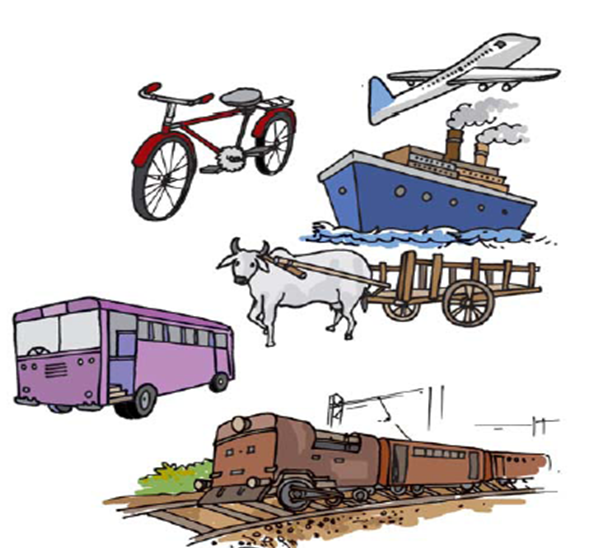
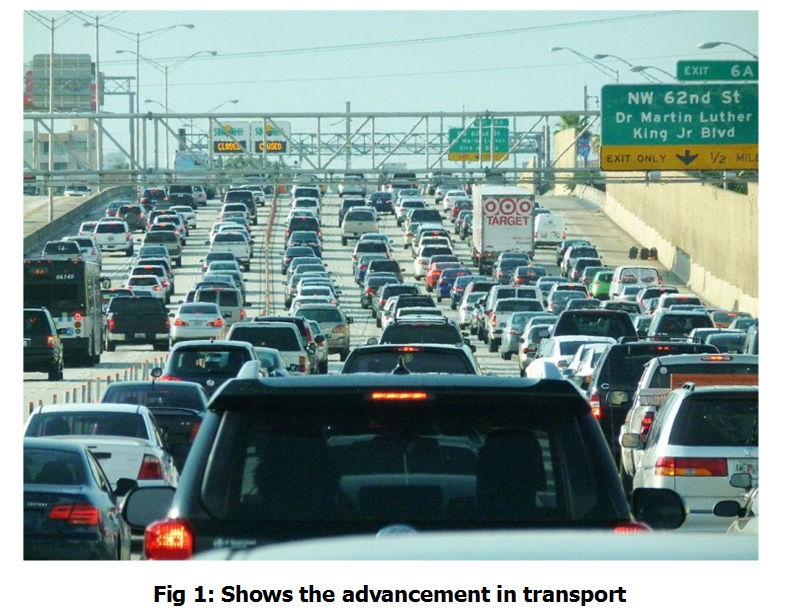
How wide is this desk?
- Books Name
- Class 6 Science Book
- Publication
- PathSet Publications
- Course
- CBSE Class 6
- Subject
- Science
How wide is this desk?

Length and distance
- Distance is the measure of how far or long something is. E.g.: the length of a table, or a soccer field or, how far is Mumbai from Delhi?
- Length can be measured in terms of a unit. A unit is a comparison of an unknown quantity with that of a known quantity. It is required to establish a common standard or convention to make calculations and analysis easier worldwide.
Traditional ways of measuring lengths :
- Traditional methods of measuring length were the use of the length of one’s foot or other body parts. But, was inconsistent since this varies from person to person and lacks uniformity.
- Distance: How far an object travels constitutes distance!! The GPS system introduced these days accurately measures the distance from one place to another.
- Arbitrary ways to measure the length or width:
- Measuring using handspan and measurement by a string were used in ancient times but these methods are not so reliable and hence some standard units of measurement have been introduced.
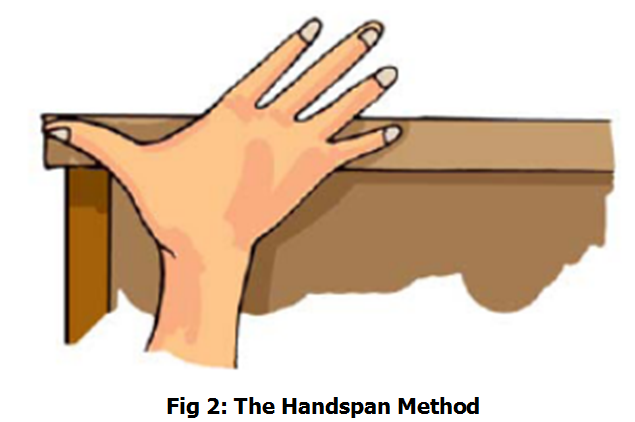
Some measurements
- Books Name
- Class 6 Science Book
- Publication
- PathSet Publications
- Course
- CBSE Class 6
- Subject
- Science
Some measurements
Non-standard measures: The lengths of steps, arms, hands, or fingers of different people are different, therefore the distance measured with their help is not always reliable. These methods are, therefore, called non-standard measures.
The lengths of steps, arms, hands, or fingers of different people are different, therefore the distance measured with their help is not always reliable.
These methods are, therefore, called non-standard measures. While measuring things, accuracy is needed.
A variety of units can be used for this purpose.
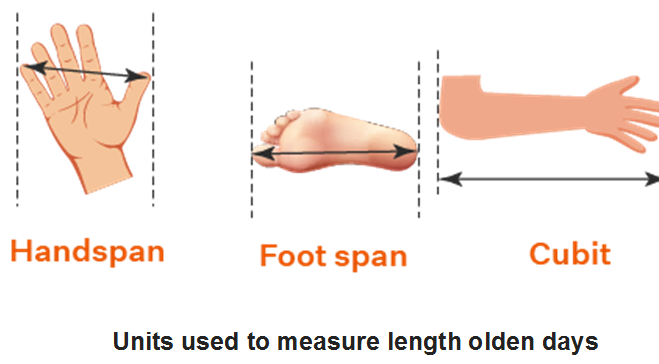
Standard Units of Measurements
- Books Name
- Class 6 Science Book
- Publication
- PathSet Publications
- Course
- CBSE Class 6
- Subject
- Science
Standard Units of Measurements
Metre: It is the standard unit of length. The symbol of metre is m.
Standard Measures: Measures that are the same all over the world are known as standard measures.
A unit of measurement which has fixed value and which does not change from person to person or place to place, is called standard unit of measurement.
Standardizing length measurement
- Scientists from all over the world have accepted a common standard unit of measurement.
- The International System of Units (S.I unit) was set up as the convention for measurement worldwide.
- A metre is the SI unit of length. It has 100 equal divisions called centimetres.
- Metre: It is the standard unit of length. The symbol of metre is m.

- To measure large distances, we use kilometres. 1 Km = 1000 metres.
Nowadays, the International System of units or the SI units have been accepted all over the world as a standard unit of measurement.
1 m = 100 cm
1 kg = 1000 g
1s = 1/60 min
The MKS system i.e. the Metre-Kilogram-Second system is called the SI System.
Correct Measurement of Length
- Books Name
- Class 6 Science Book
- Publication
- PathSet Publications
- Course
- CBSE Class 6
- Subject
- Science
Correct Measurement of Length
Each metre (m) is divided into 100 equal divisions, called centimetres (cm). Each centimeter has ten equal divisions, called millimeters (mm).
Thus,
- 1 m = 100 cm
- 1 cm = 10 mm
For measuring large distances, metre is not a convenient unit.
We define a larger unit of length. It is called kilometer (km).
- 1 km = 1000 m.
Simple multiples of units: Units that are used for the measurement of larger distances are the multiples of SI units.
For example: deca, hecto, kilo.
- 1 decameter = 10 m
- 1 hectometer = 100 m
- 1 kilometer = 1000 m
Submultiples of units: Units used for measuring smaller distances are the submultiples of SI units.
For example, milli, centi, deci.
- 1 m = 10 decimetre
- 1 m = 100 centimeter
- 1 m = 1000 millimeter
Correct Way to Use a Meter Scale
- Keep the scale in contact with the object to be measured.
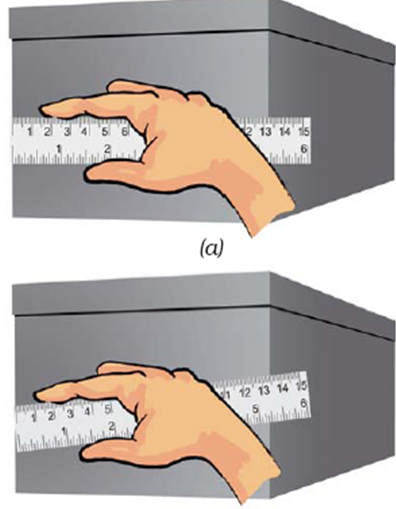
If scales are broken or the zero mark is not visible, it can lead to a zero error. Then measuring from a different mark must be carried out.
- Then, avoid taking measurements from zero mark.
- Use any other full mark of the scale, say 1.0 cm.
- Subtract the reading of this mark from the reading at the other end. For example, in Fig. 10.3 (6), the reading at starting mark is 1.0 cm and at the other end it is 6.5 cm. Therefore, the length of the object is (6.5 – 1.0) cm = 5.5 cm.
- The correct reading will be obtained by subtracting the value from the full mark considered as zero.
- Measurement with a scale with broken ends
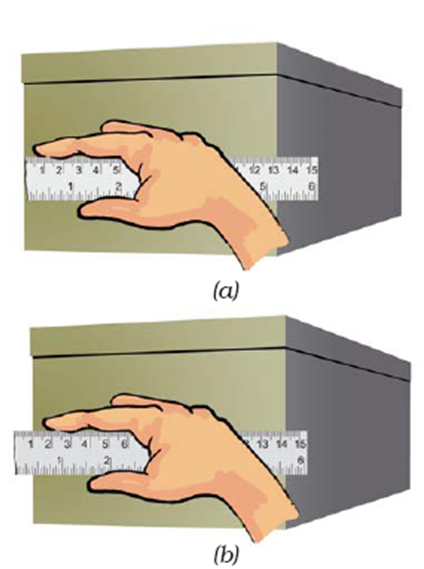
While measuring the eye must be exactly above the point where the measurement is to be taken, to avoid parallax errors.
- Start measuring from the 0 mark of the scale.
- To avoid taking incorrect measurements the eye position should be correct. Consider the following figure:
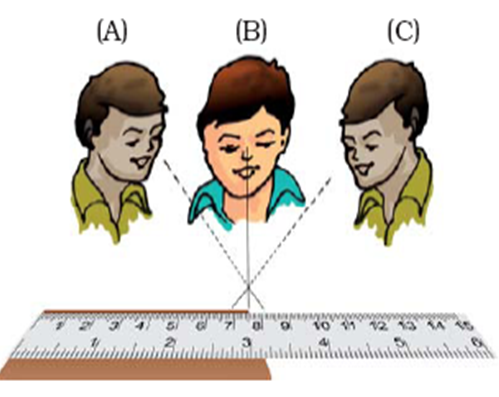
The eye position in the centre is correct to get an accurate measurement, while the ones in the left and right direction will give some error in measurement.
- Correct position of the eye is also important for making measurement. Your eye must be exactly above the point where the measurement is to be taken as shown in Fig. 10.4. Position ‘A’ is the correct position of the eye. Note that from position A’, the reading is 1.0 cm. From positions ‘B’ and ‘C’, the readings may be different.
- The eye position in the centre is correct to get an accurate measurement, while the ones in the left and right direction will give some error in measurement.
- Correct position of the eye is also important for making measurement. Your eye must be exactly above the point where the measurement is to be taken as shown in Fig. 10.4. Position ‘A’ is the correct position of the eye. Note that from position A’, the reading is 1.0 cm. From positions ‘B’ and ‘C’, the readings may be different.
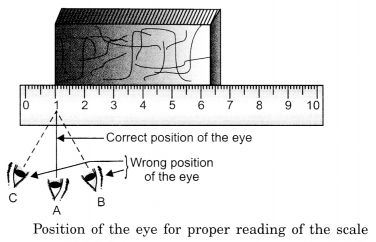
Least count: A scale is marked in centimetres and millimeters. With the scales of this kind we can measure correctly up to one millimeter, that is one-tenth of a centimeter. This is called the least count of a (15 cm) scale.
Measuring the length of a curved line
- Books Name
- Class 6 Science Book
- Publication
- PathSet Publications
- Course
- CBSE Class 6
- Subject
- Science
Measuring the length of a curved line
Measuring the length of a curved line: We cannot measure the length of a curved line directly by using a metre scale. We can use a thread or divider to measure the length of a curved line.
Measurement Along Curved Line
Is it possible to measure a curved line with a metre scale? Well, it is not so. Hence to measure a curved line the following steps can be taken into account:
- Take a thread and tie a knot at one end.
- From this end measure a small portion of the curved line which is somewhat straight and put the thumb.
- Now again start from the thumb marked position and measure another small portion of the line.
- Repeat this process until you reach the end of the line. Tie a knot on the thread on reaching the end. Now measure the two knots using a metre scale.
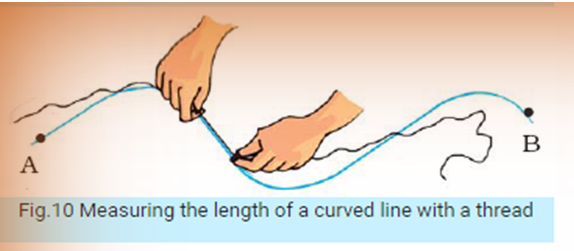
Moving things around us
- Books Name
- Class 6 Science Book
- Publication
- PathSet Publications
- Course
- CBSE Class 6
- Subject
- Science
Moving things around us
- When we look around, we find that some objects are at rest and some are moving or in motion.
- The motion of all the objects are not of the same type.
- Some objects may have more than one type of motion at the same time.
Motion: It is a state of objects in which they are moving, that is, they are changing their place with the changing time.
- Curved lengths cannot be measured using metre scales.
- A string or a thread can be used to measure curved lines by creating a knot at one end and keeping that at the beginning, one can trace the curved line.
- Then this length can be stretched out and measured with the help of a metre scale.
- A measuring tape can be used to find the lengths of curved objects. E.g. girth of a tree trunk, or length of a snake.
- Rest: All the stationary objects which are not in motion, that is, do not change their place with time are said to be at rest.
- Objects which are moving around us are said to be in motion whereas the objects which are not moving are said to be at rest.
- Any change in position with time can be termed as motion.
- A motion can be termed slow or fast based on the distance it covers in a specific amount of time. More distance covered means the motion is fast and vice versa.
- Motion can be the complete object or the parts within it.
- Objects like trains, hands of a clock, ants are moving objects whereas houses, trees, wall clocks or non-moving or stationary objects.
Types of motion
- Books Name
- Class 6 Science Book
- Publication
- PathSet Publications
- Course
- CBSE Class 6
- Subject
- Science
Types of Motion
- Motion is defined as the change in position of an object.
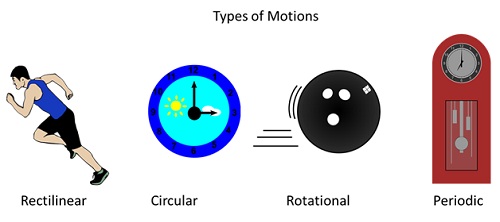
- Rectilinear Motion: When an object moves along a straight line, it is said to be undergoing rectilinear motion.
For Example:
-
- A train moving along a railway track.
- A coin falling from a building, or a sprinter running a 100 metre race
- Circular Motion: Have you seen the hands of a clock? The motion exhibited by the hands of a clock is called Circular Motion.
- When an object is following a circular path of motion, it is called circular motion
- In circular motion, the object remains at the same distance from a fixed point
- Examples:
- motion of stone tied in a thread and whirled.
- motion of a blade of an electric fan.
- The moon revolving around the earth.
- motion of second’s hand in a clock.
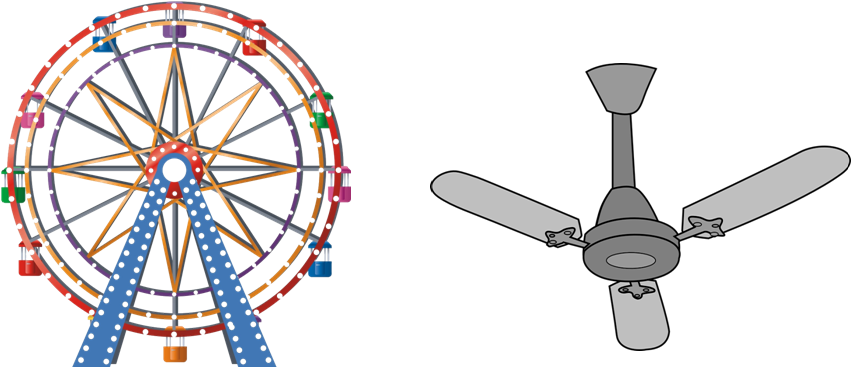
- Periodic Motion: When an object repeats its motion after a fixed interval of time it is said to be undergoing periodic motion.
Motion in which an object repeats its motion after a fixed interval of time is called periodic motion.
Examples:
- Oscillations of a pendulum
- Motion f a swing.
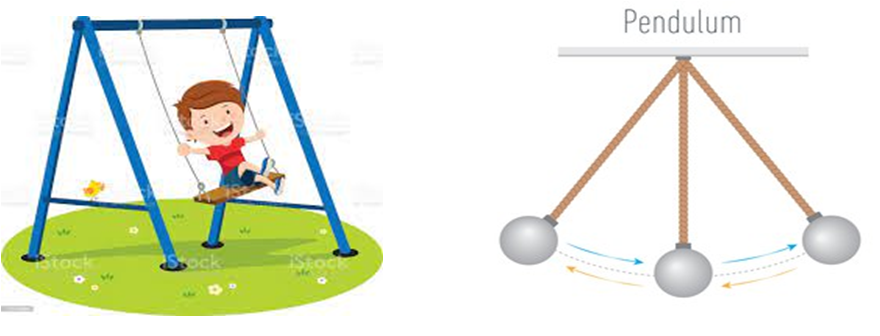
Rotational Motion:
- Motion in which a whole body moves about an axis is called a rotational motion.
- This motion can be easily understood by imagining Earth’s rotation. When the Earth spins on its own axis it is said to be undergoing rotational motion.
For Example:
- Pendulum
- motion of a top.
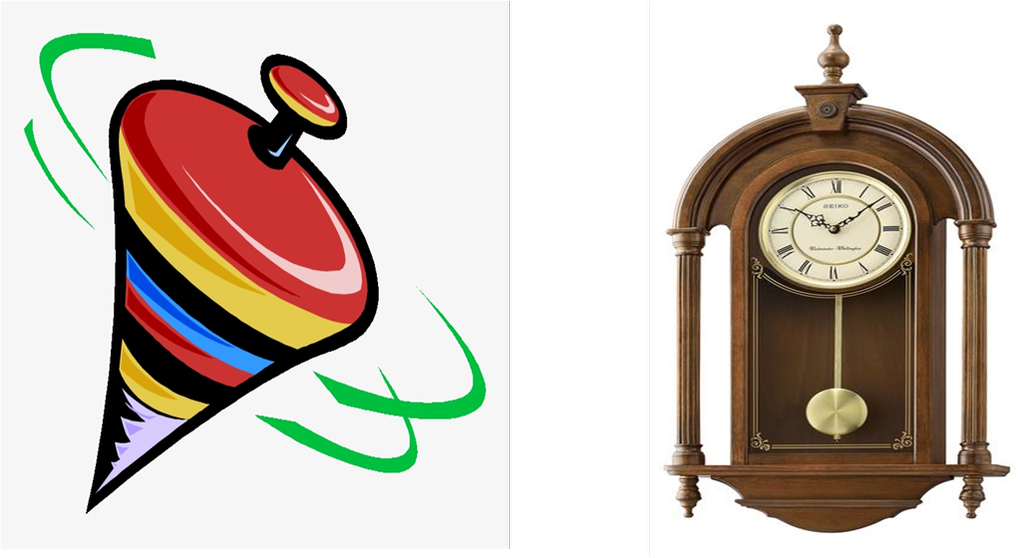
Combination of two or more types of Motions: In some situations, the motion of an object may be a combination of two or more of the above mentioned types of motion.
Examples:
- Motion of a ball on the ground. Here, the ball is rotating about an axis but the axis itself is moving along a straight line. Thus, the ball executes a rectilinear motion as well as rotational motion.
- Motion of earth: Earth executes rotations on its axis and also revolves around the sun.
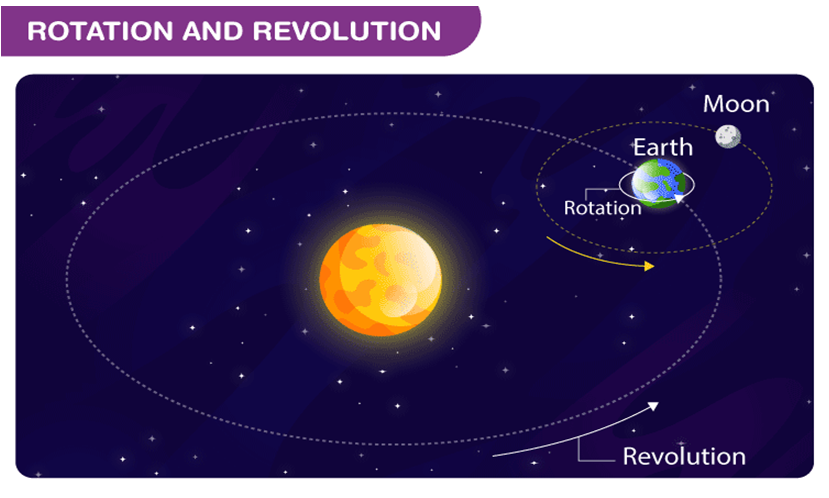
Conclusion:
- Unit of measurements
- It involves the comparison of an unknown quantity with some known quantity of the same kind.
- This known fixed quantity is called a unit.
- The result of measurement is expressed in two parts. One part is a number, the other part is the unit of measurement.
- Circular motion: When a body moves in a circular path, its motion is known as circular motion.
- Distance: Measurement of the gap between two points in certain units is called distance.
- Measurement: Measurement means the comparison of an unknown quantity with some known quantity.
- Motion: It is a state of objects in which they are moving that is, they are changing their place with time.
- Periodic motion: Motion in which an object repeats its motion after a fixed interval of time is called periodic motion.
- Rectilinear motion: When the objects change their position with time along a straight line, this type of motion is called rectilinear motion.
- SI units: In October 1960 the 12th general conference on weight and measures adopted the International System of units to maintain uniformity all over the world. This system of units is called SI units.
- Units of measurement: Measurement means the comparison of an unknown quantity with some known quantity. This known fixed quantity is called a unit of measurement.
- Time: Time is the unit that measures how long it takes to do anything. Distance is measured concerning.
- If an object is moving with some speed ‘s’ for a time interval ‘to, then the distance covered in that time will be = s x t

 Param Publication
Param Publication
 PathSet Publications
PathSet Publications
